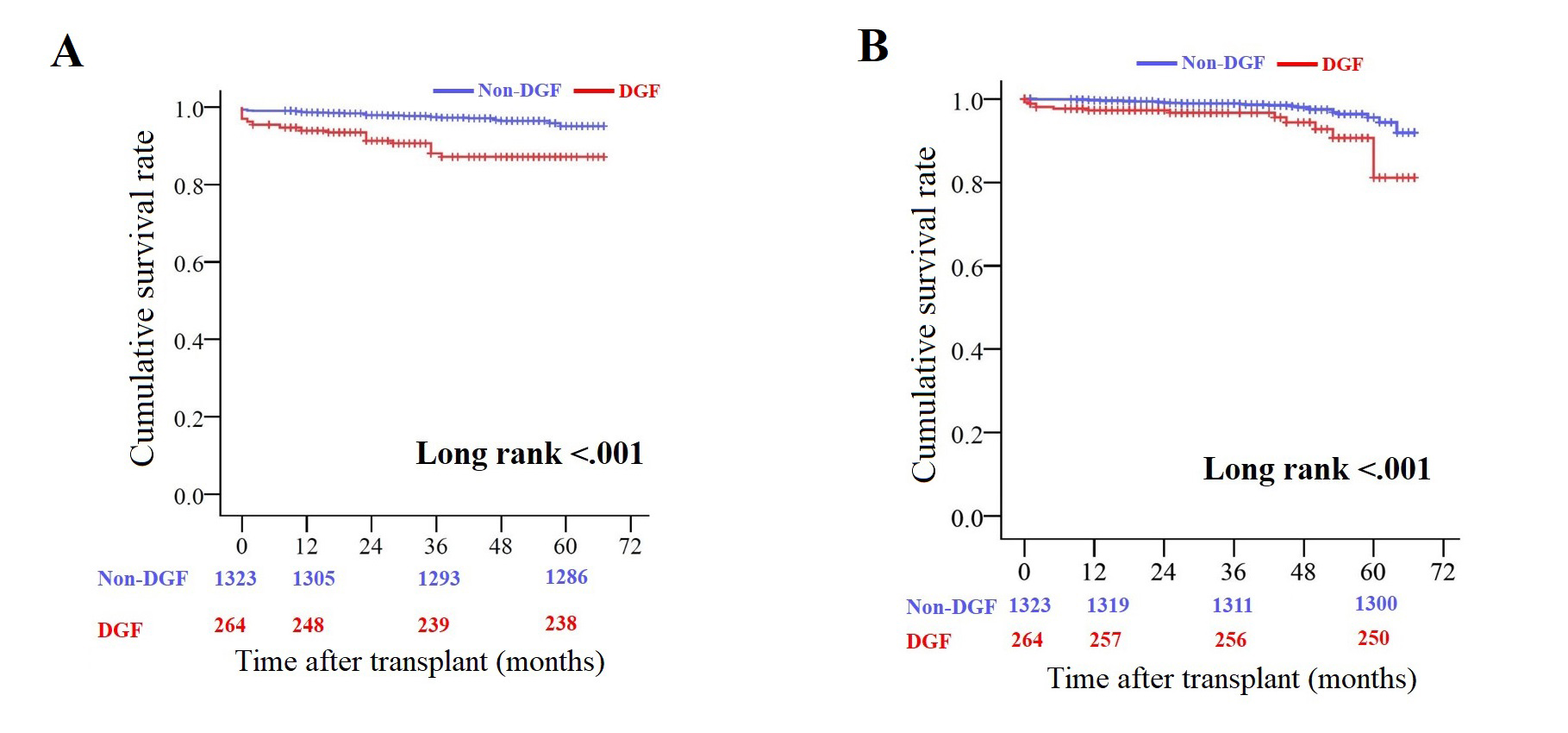Risk Factors Associated with Medium-Term Allograft and Recipient Survival: Learned from 1,587 Adults with Single Kidney Transplantation
1Institute of Organ Transplantation,Tongji Hospital,Tongji Medical College,HUST, Wuhan, China, 2Huazhong University of Science and Technology, Wuhan, China
Meeting: 2022 American Transplant Congress
Abstract number: 1392
Keywords: Donors, non-heart-beating, Graft survival, Kidney transplantation, Post-operative complications
Topic: Clinical Science » Kidney » 41 - Kidney Technical
Session Information
Session Time: 7:00pm-8:00pm
 Presentation Time: 7:00pm-8:00pm
Presentation Time: 7:00pm-8:00pm
Location: Hynes Halls C & D
*Purpose: Retrospectively investigated the reason for graft failure during the perioperative period and discussed whether DGF and the high SCr level in a short time (6 months) after transplantation could affect the medium-term graft and recipient survival in our single-center.
*Methods: A total of 1587 adult patients (aged ≥18 years) who underwent their first single kidney transplantation (SKT) from deceased adult donors were included. We observed the perioperative adverse events, delayed graft function (DGF), primary graft failure (PNF), graft failure, and death at the last follow-up. Furthermore, we compared the outcomes from recipients with or without DGF, and from recipients with a high serum creatinine (SCr) level in a short time (6 months) after transplantation or with a normal SCr level to identify the risk factors associated with medium-term allograft and recipient survival.
*Results: For medium-term outcomes, 2.4% (n = 39) recipients dead at the last follow-up. The rate of graft failure at the follow-up (death censored) and at the follow-up (death included) was 3.9% (n = 63) and 6.4% (n = 102), respectively. The results of graft and recipient survivalshowed that if recipients had DGF, the 1-year survival reduced by 7.3% (graft, P < 0.001) and 3.4% (recipient, P < 0.01), and the 3-year survival reduced by 11.6% (graft, P < 0001) and 3.1% (recipient, P < 0.01), respectively. Finally, we compared the 1- and 3-year graft and recipient survival between the high-SCr group (recipients with the SCr level ≥2.0 mg/dL 6 months after surgery) and the normal group (recipients with the SCr level <2.0 mg/dL 6 months after surgery). The results showed that recipients with the high SCr level during the short time after surgery could not affect the recipient survival but only reduce the 3-year graft survival from 98.5% to 91.7% (P < 0.05).
*Conclusions: For medium-term outcomes, DGF was one of the risk factors significantly associated with poor graft and recipient survival, and the high SCr level in a short time after transplantation could affect the medium-term graft survival.
To cite this abstract in AMA style:
Chang S, Liu B, Du D, Gong N, Zhu L, Chen G, Zhang W, Chen Z. Risk Factors Associated with Medium-Term Allograft and Recipient Survival: Learned from 1,587 Adults with Single Kidney Transplantation [abstract]. Am J Transplant. 2022; 22 (suppl 3). https://atcmeetingabstracts.com/abstract/risk-factors-associated-with-medium-term-allograft-and-recipient-survival-learned-from-1587-adults-with-single-kidney-transplantation/. Accessed December 24, 2025.« Back to 2022 American Transplant Congress


